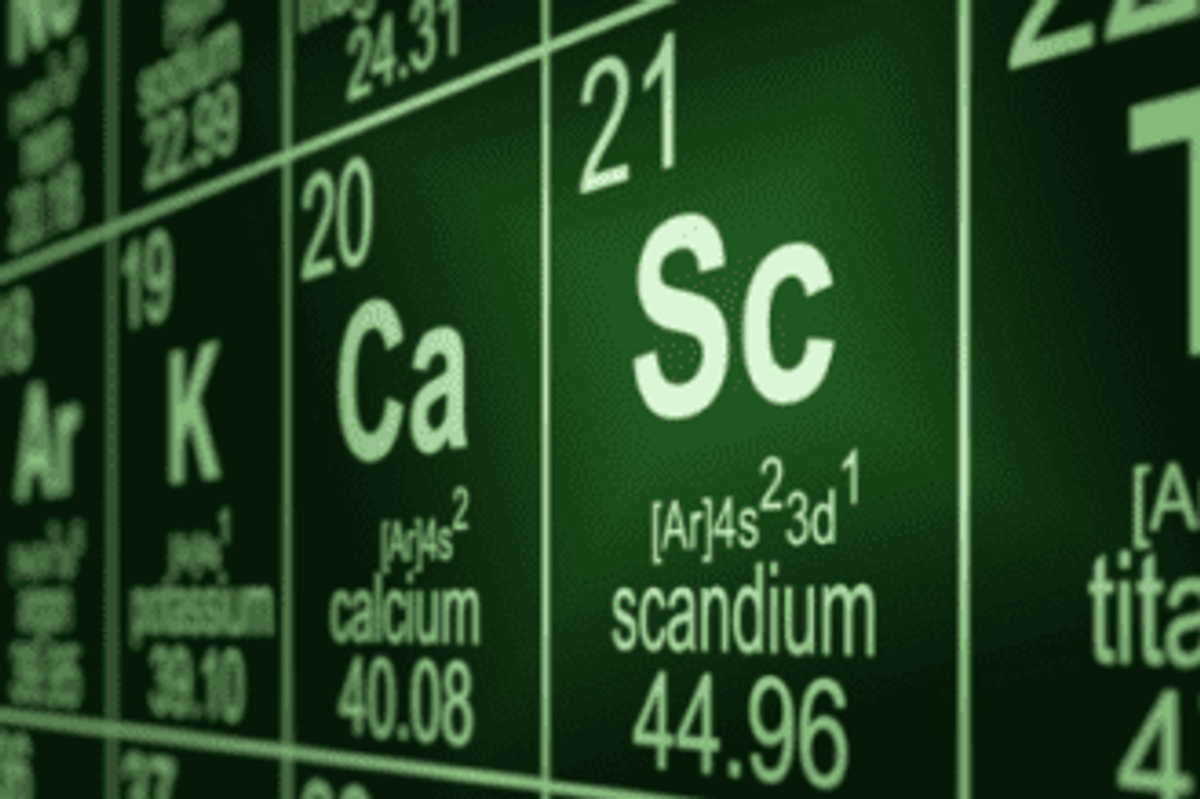5 Key Scandium Facts
Here’s a look at five scandium facts every investor should know before jumping into the sector.

Scandium is a soft, light, silvery-white metal that becomes slightly tinged with yellow or pink when exposed to air. It was discovered in Sweden in 1879 by Lars Nilson, who named it after the Latin word “scandia,” which means Scandinavia.
Although it was discovered in the 1800s, scandium wasn’t mined until 1937. Today, the US Geological Survey places annual production at less than 10 MT per year, though it notes that true production is impossible to determine and could be considerably higher.
That said, interest in the metal continues to rise, and some market watchers believe there could be plenty of upside for investors looking to get into the space. Here’s a look at five key scandium facts every investor should know before jumping into the sector.
1. Scandium is abundant…
Scandium is mostly found in low concentrations, but it is plentiful throughout the world. In fact, the metal has a crustal abundance that is even higher than that of lead. In total, there are 22 parts per million by weight of scandium in the ground.
2. …but it can be difficult to process
Even when scandium is found in high concentrations, processing it can be difficult; that is one reason why there are very few stable sources of the metal.
Unsurprisingly, that means there has been very little adoption of scandium in commercial applications. However, a lot of research into using the critical metal has been done, and once dependable sources are found there are many things that scandium could be used for.
3. Scandium is mined as a by-product
Because it is generally found only in low concentrations, scandium is currently produced exclusively as a by-product during the processing of various ores; it can also be recovered from previously processed tailings or residues. In recent years, scandium has been produced as a by-product in countries like China, Kazakhstan, Russia and Ukraine.
It’s possible that scandium could be mined differently in the future. Two major deposits in New South Wales, Australia are large, high-grade and concentrated, and the plan is for both to be primary scandium mines. Construction at both projects, called Nyngan and Syerston, is supposed to start in 2017, with first production expected by 2019.
In a recent interview, John Kaiser of Kaiser Research commented, “you never get high-grade scandium deposits. It’s a dispersoid, it hates itself. It tends to go away from it. This is why these deposits in Australia are such game changers.”
4. Scandium is mainly used in alloys
As mentioned, scandium has few commercial applications. That said, it does have a few — according to the US Geological Survey, in 2016 scandium was mainly used in aluminum-scandium alloys and solid oxide fuel cells. The metal is generating particular interest in the aircraft industry as aluminum-scandium alloys have the potential to lead to lighter aircraft, greater fuel efficiency and more cost-effective aircraft production.
Other uses for scandium included ceramics, electronics, lasers, lighting and radioactive isotopes.
5. There is no formal market for trading scandium
There is no formal market for trading scandium, and there are no terminal or future markets for the metal. Most exchanges of scandium take place between private parties at undisclosed prices and amounts, so it can be difficult for investors to gain exposure to the metal and get definitive information on supply, demand and pricing.
One way for market participants to invest in scandium is to buy shares of mining companies looking at developing scandium projects. Some juniors that investors should keep an eye on, according to Kaiser, are Scandium International (TSX:SCY), Clean TeQ Holdings (ASX:CLQ) and Platina (ASX:PGM).
Don’t forget to follow us @INN_Resource for real-time news updates!
Securities Disclosure: I, Priscila Barrera, hold no direct investment interest in any company mentioned in this article.
